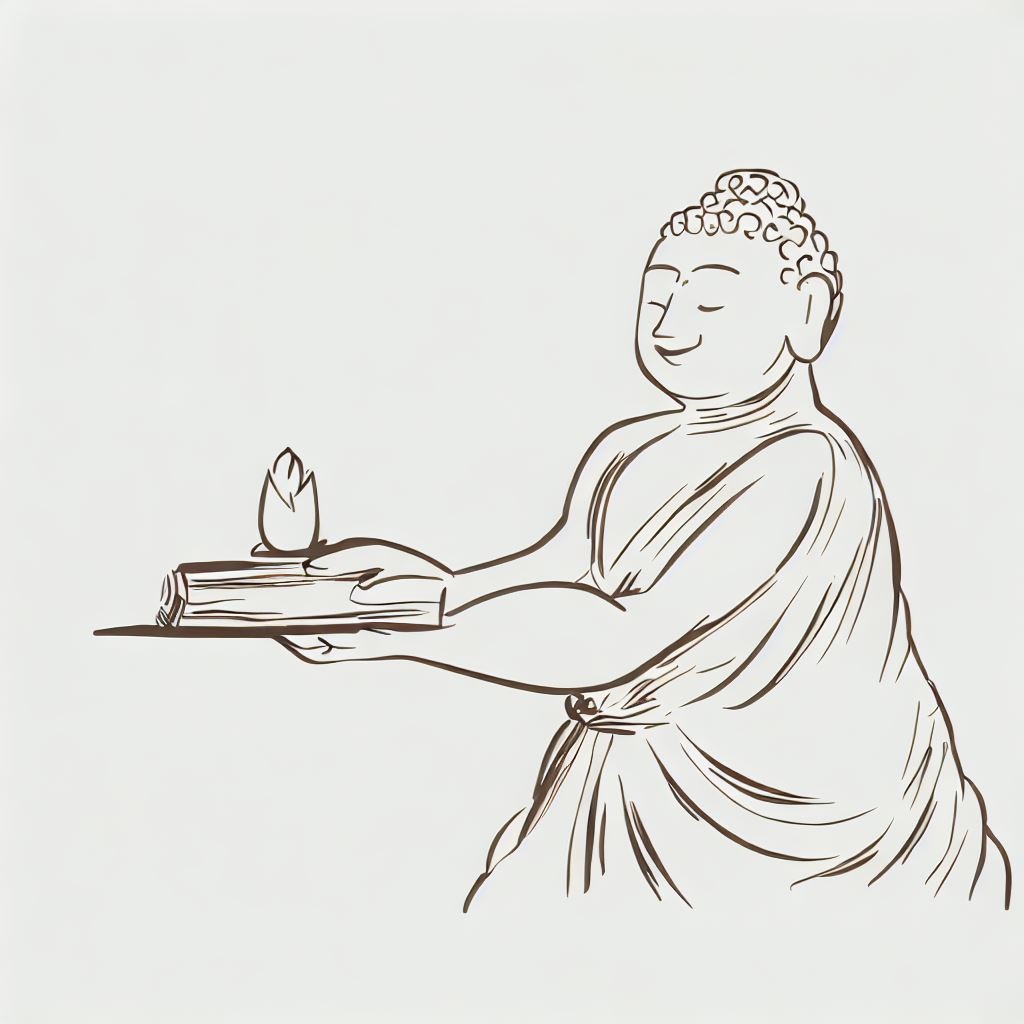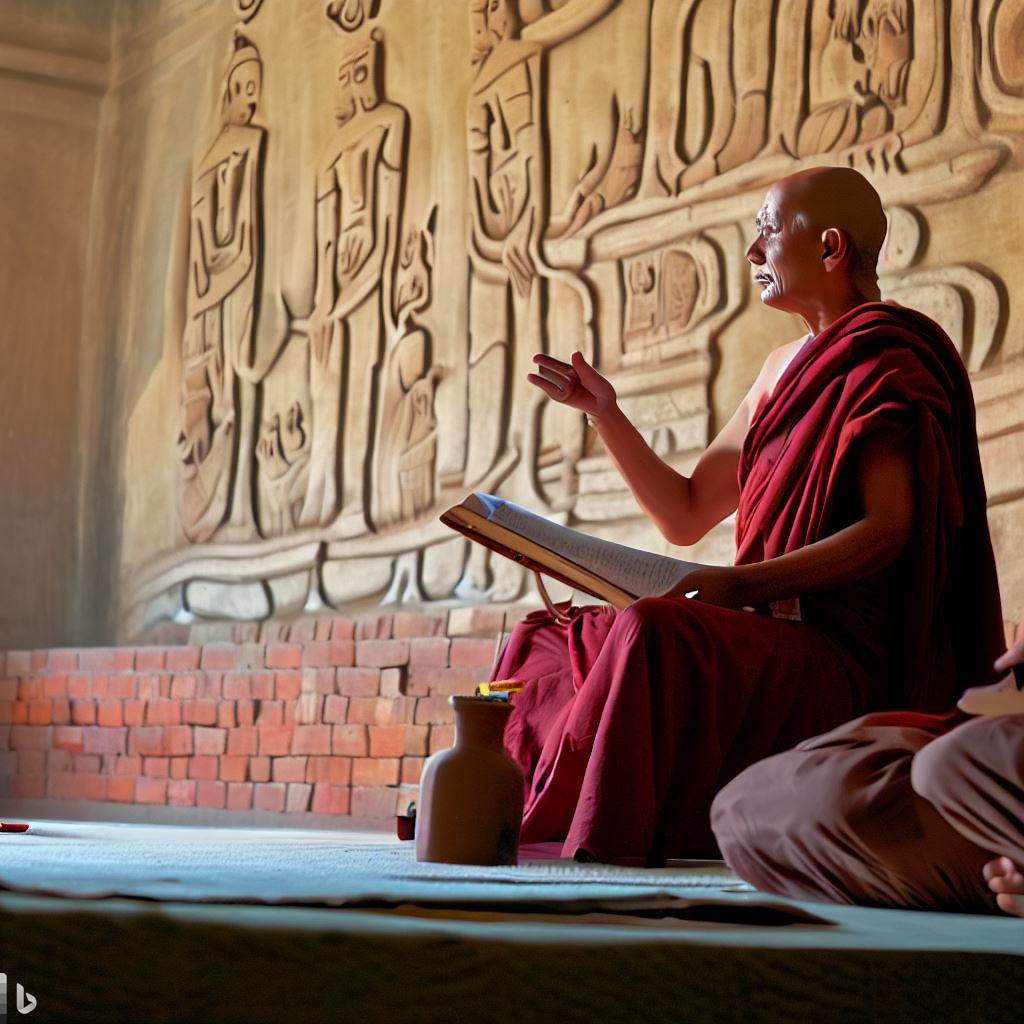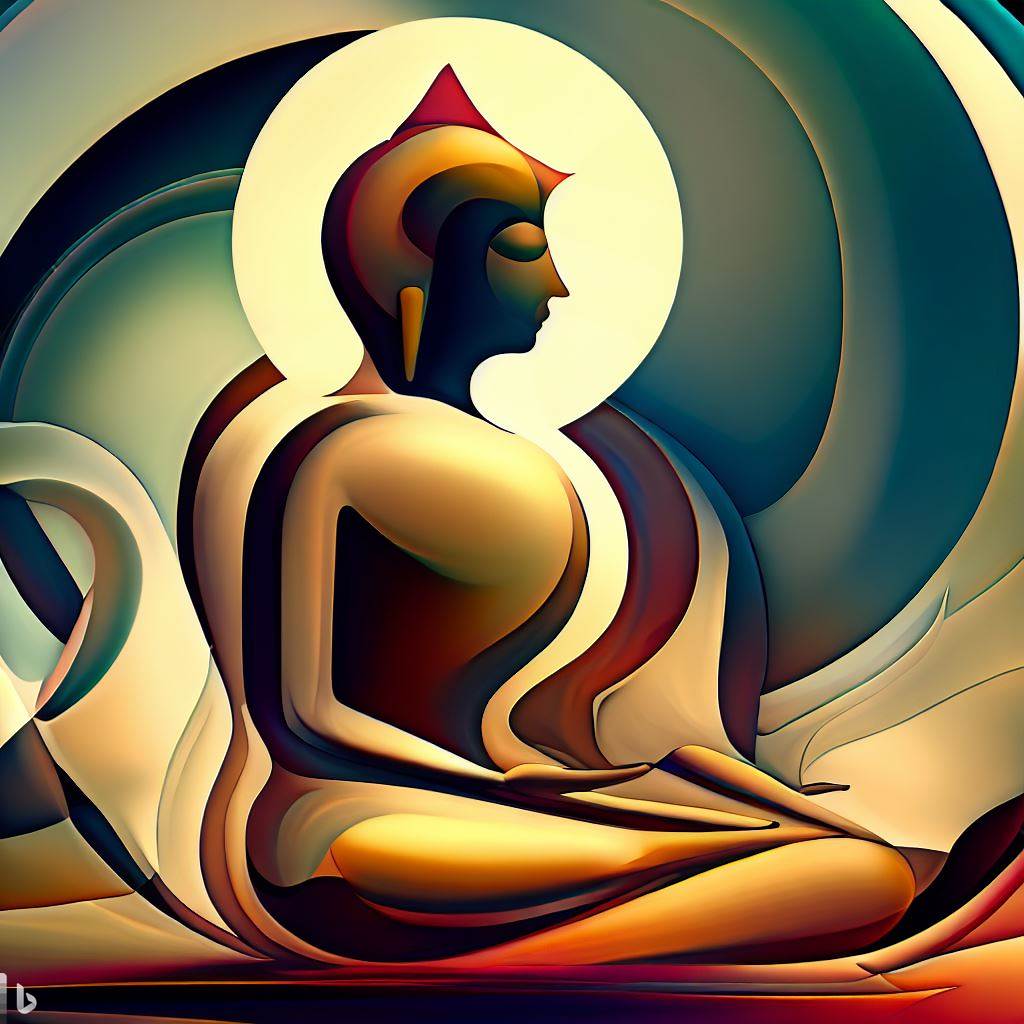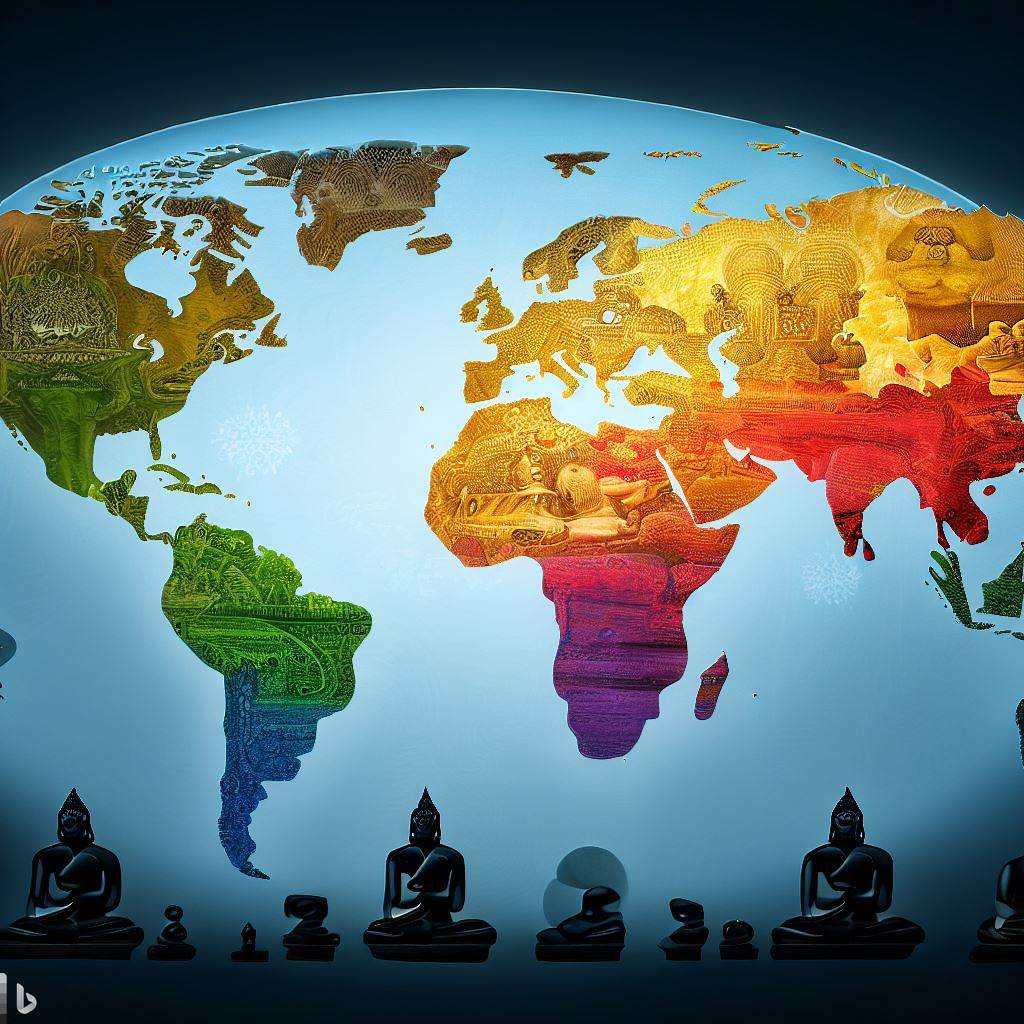
The Pali Canon
According to tradition, the text of the Pali Canon was settled at a Council held at Rajagaha immediately after the Teacher’s passing, having been memorised by leading Elders, who were highly realised practitioners of the Dhamma. It is clear that the collection as we have it originated over a more extended period. The Canon was preserved in oral form until the first century B.C., when it became apparent that the sacred texts might vanish from the earth if not recorded in writing. They were accordingly written down under King Vattaghani in Sri Lanka, though some portions may already have been committed to writing earlier. The feat of memory in preserving such an extensive body of text orally for so long may seem extraordinary to us, but it was pretty usual in ancient India. Writing was certainly known in India in the Buddha’s time but was not used for such purposes. It must, however, be remembered that in the course of forty-five years, the Buddha preached, doubtless often in a standardised form to many thousands of people and that most of the monks and nuns had trained minds and memories and will have known full well the meaning of what they were repeating. From the time of the Second Council, held at Vesdi one century after the Buddha’s passing, we hear of divisions and the formation of sects within the Order. This led eventually to the rise of the Mahayana schools. An up-to-date account of these developments can be found in A.K. Warder’s Indian Buddhism. Here, we need merely note that the Theravada type of Buddhism was carried early to Ceylon and later to Burma, Thailand and other parts of Southeast Asia, whereas the forms of Buddhism that spread to Tibet, China, Japan and other more northern regions were of the developed, Mahayana type. Portions of the early scriptures of some of the schools that arose have been preserved in Sanskrit or, very often, in Chinese and/or Tibetan translations. THE PALI LANGUAGE Strictly speaking, the word Piti means ‘text’. But the expression Palibhasa, meaning ‘language of the texts’, was early taken to be the name of the language itself. Its use is confined to Buddhist subjects only in the Theravada school. Its exact origins are the subject of learned debate. While we cannot go too deeply into the matter here, it may be said that the traditional equation with the language of the ancient kingdom of Magadha and the assertion that Pali is, literally and precisely, the language spoken by the Buddha himself cannot be sustained. All the same, the language the Buddha said was, in all probability, not very different from Pali. From the point of view of the non-specialist, we can think of Pali as a kind of simplified Sanskrit. Its development, like that of other early Indian dialects, can be thought of as similar to an early form of Italian just breaking away from Latin. A close parallel is found in the word for ‘seven’, where Latin septem has become Italian sette, the pt being simplified by assimilation. The Sanskrit equivalent sapta is in Pali satta, and similar types of simplification are found in hundreds of words. The grammar, too, has been slightly simplified, though not nearly so much as that of Italian. But the two languages are still so close that it is possible to convert whole passages of Sanskrit into Pali simply by making the necessary mechanical transposition. THE AUTHENTICITY OF THE PALI CANON Indeed, not all parts of the Pali Canon are equally old or can be taken to be the Buddha’s precise words. This is plain common sense and does not mean altogether rejecting their authenticity. Recent research has gone far to vindicate the claim that the Pali Canon holds at least a prime place among our sources in the search for ‘original’ Buddhism, or, in fact, ‘what the Buddha taught’. No attempt can be made here to go into any detail concerning questions of authenticity or the chronological stratification of the materials found in the Digha Nikaya. Some indications of scholarly opinion on this subject can be found, mainly in Pande’s Studies in the Origins of Buddhism (1967), though not all his findings are equally acceptable. Almost all doctrinal statements put directly into the mouth of the Buddha can be accepted as authentic, and this seems to be the most crucial point. THE DIVISIONS OF THE PALI CANON The Pali Canon is divided into three main sections (Tipitaka: the Three Baskets): I. Vinaya Pitaka This deals with monastic discipline for monks and nuns. 2. Sutta Pitaka The ‘Discourses’ (Suttas): the portion of the Canon of most interest to lay Buddhists (see below). 3. Abhidhamma Pitaka The ‘further doctrine’ is a highly schematised philosophical compendium of seven books. The Nikayas in Sutta Pitaka There are five nikayas (collections) of suttas: Digha Nikāya This includes The Greater Discourse on the Foundations of Mindfulness, The Fruits of the Contemplative Life, and The Buddha’s Last Days. There are 34 long suttas in this Nikaya. Majjhima Nikāya This includes Shorter Exposition of Kamma, Mindfulness of Breathing, and Mindfulness of the Body. There are 152 medium-length suttas in this nikaya. Samyutta Nikaya According to one reckoning, there are 2,889, but according to the commentary, 7,762, shorter suttas in this Nikaya. Anguttara Nikāya These teachings are arranged numerically. According to the commentary’s reckoning, it includes 9,565 short suttas grouped by number from ones to elevens. According to Keown, “there is considerable disparity between the Pāli and the Sarvāstivādin versions, with more than two-thirds of the sūtras found in one but not the other compilation, which suggests that much of this portion of the Sūtra Piṭaka was not formed until a fairly late date.” Khuddaka Nikāya This heterogeneous mix of sermons, doctrines, and poetry is attributed to the Buddha and his disciples. The contents vary somewhat between editions. Importance of Pali Canon After two and a half millennia and six major rehearsals, the Pali Canon of Buddhism has been recognised as the oldest, most original, most complete, and most accurate…









